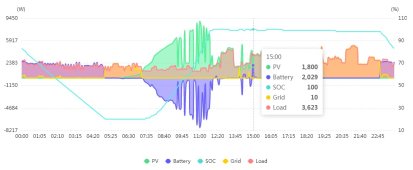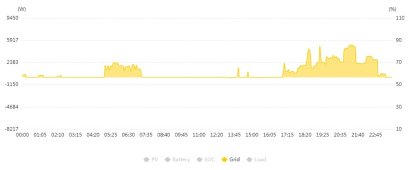According to someone at SMA that I spoke with I can just use Ethernet for communications between Sunny Island and Sunny Boy. The SB6.0 has an A and a B communication port. To allow the Master SI to communicate with both SB6.0 inverters I used a Y Ethernet splitter to extend the first Ethernet cable (from the Master SI) to the second SB6.0.Note that your Sunny Boy model is listed under the heading "PV Inverters for Planned Systems (as of April 2019)" but is of an earlier date.
There was some change between -40 model and -41. I don't know if that is hardware or only firmware. I think a later version of firmware is required for battery backup system "✓ 1 Compatible if country data set CA Rule 21 is set" but not for off-grid.
These newer models never had RS-485. Possibly there is a daughter card for them with that interface, probably not. There is a daughter card for Sunny Island with SpeedWire, but I don't think its firmware supports using that to talk with Sunny Boy. Instead (only SMA Data Manager), it appears to be the frequency-watts option of Rule 21 that enables frequency-shift. I think UL-1741 is required for new GT PV inverters in California and some other locations, but I thought frequency-watts is only to be used if utility approves. But I haven't seen instructions for enabling frequency-watts separately from Rule 21.
Just Rule 21 frequency-watts should make grid-backup and off-grid work. That requires recent firmware. For off-grid, setting "default = offgrid" or "country set = offgrid60", whichever yours has, should work with original firmware.
I got an old new-in-box Sunny WebBox. now there is Data Manager or something like that which I think uses SpeedWire to adjust Sunny Boy output for purposes such as remote control of PV plants (for a more stable grid.) I don't think it is needed for stand-alone use.
I think you can probably connect by either WiFi or Ethernet. I have SpeedWire (Ethernet) cards for some models, but for that I use Sunny Explorer, which SMA does not recommend for setting parameters (only reading) for your model. See if WiFi and browser works.
Right now I’m completing the install of some 125A DC circuit breakers between the SI4548 inverters and the Discover Energy AES LiFePO4 battery bank. This is the first time that I’ve used a DC circuit breaker. It is odd having one circuit for the + wire and another circuit for the - wire in a combined double pole breaker. I’m assuming that it will not cause a problem if I position box that the DC circuit breakers in on its side. That will make wiring much easier to install.
The installer who helped me when I began to set up this off-grid system will be back in town next week, so he can help with commissioning the inverters. He can also assist with running 2 AWG wiring from the inverter shed that is next to the solar panels to a stand alone breaker box in the house. All of the grid-tied and the off-grid wiring is separate. When the off-grid setup works I will tell the electric company to disconnect the grid. Our electric company has decided that they really don’t like for people to have solar panels. We are grandfathered for a few more years, and then I guess that we lose our net-meter. That does not sound good to me.
BobK53
Arnaudville, Louisiana
Note that your Sunny Boy model is listed under the heading "PV Inverters for Planned Systems (as of April 2019)" but is of an earlier date.
There was some change between -40 model and -41. I don't know if that is hardware or only firmware. I think a later version of firmware is required for battery backup system "✓ 1 Compatible if country data set CA Rule 21 is set" but not for off-grid.
These newer models never had RS-485. Possibly there is a daughter card for them with that interface, probably not. There is a daughter card for Sunny Island with SpeedWire, but I don't think its firmware supports using that to talk with Sunny Boy. Instead (only SMA Data Manager), it appears to be the frequency-watts option of Rule 21 that enables frequency-shift. I think UL-1741 is required for new GT PV inverters in California and some other locations, but I thought frequency-watts is only to be used if utility approves. But I haven't seen instructions for enabling frequency-watts separately from Rule 21.
Just Rule 21 frequency-watts should make grid-backup and off-grid work. That requires recent firmware. For off-grid, setting "default = offgrid" or "country set = offgrid60", whichever yours has, should work with original firmware.
I got an old new-in-box Sunny WebBox. now there is Data Manager or something like that which I think uses SpeedWire to adjust Sunny Boy output for purposes such as remote control of PV plants (for a more stable grid.) I don't think it is needed for stand-alone use.
I think you can probably connect by either WiFi or Ethernet. I have SpeedWire (Ethernet) cards for some models, but for that I use Sunny Explorer, which SMA does not recommend for setting parameters (only reading) for your model. See if WiFi and browser works.





